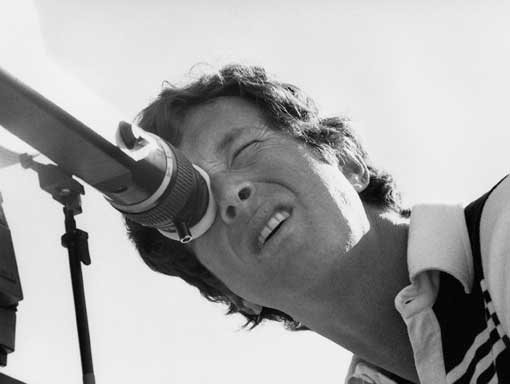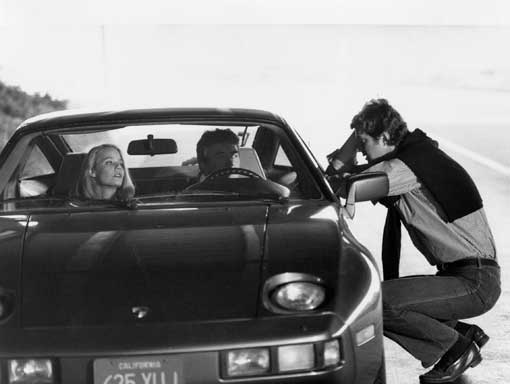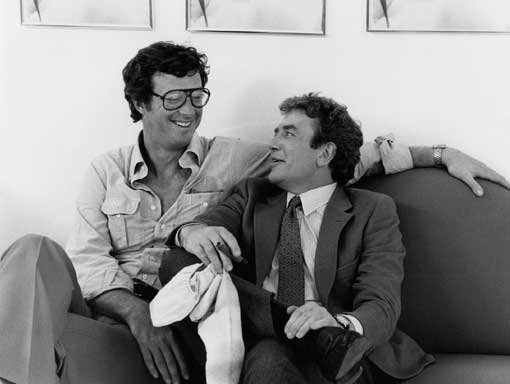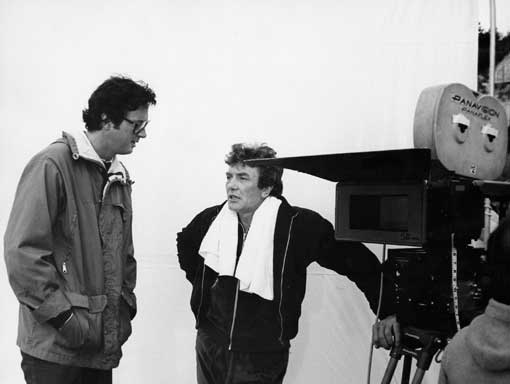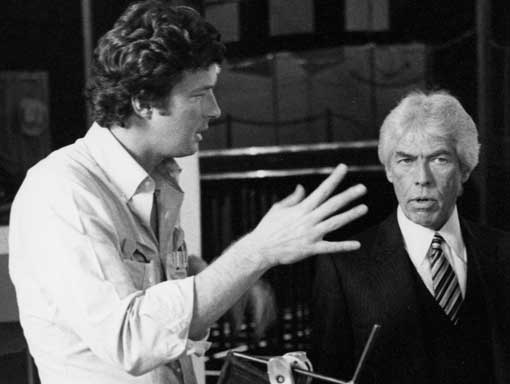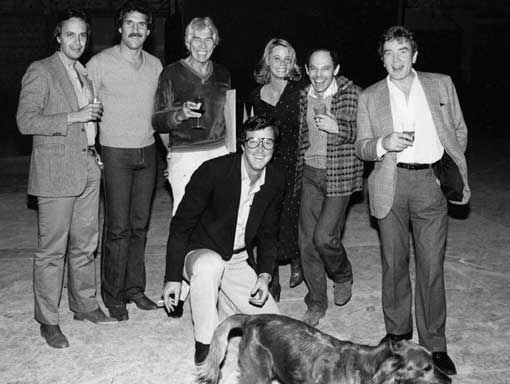Looker
In His Own Words
This movie came about at an odd time in my life. I had worked for a long time on a book and movie called Congo. And after it was all done, and we’d started production, we discovered that it was impossible to get gorillas, because gorillas were an endangered species. So I wanted to do something very, very different, and instead of something like Congo which was really a fantasy, 19th century fantasy at that, I wanted to do something that was much more 20th century.
And the elements that went into Looker really were concerns about this incredible focus on beauty, this idea of perfection. The extent to which we’re all directed by, driven by, advertising and the notion that this emphasis on advertising becomes more extreme as the competition among advertisers increases, that there’s going to be an increasing kind of artifice that appears not only in the ads, but appears in ordinary life as well.


Synopsis
Beautiful models are murdered after undergoing mysteriously precise cosmetic surgery. A woman uncovers a plot to replace real people with computer generated images in this action thriller.
From the Archives
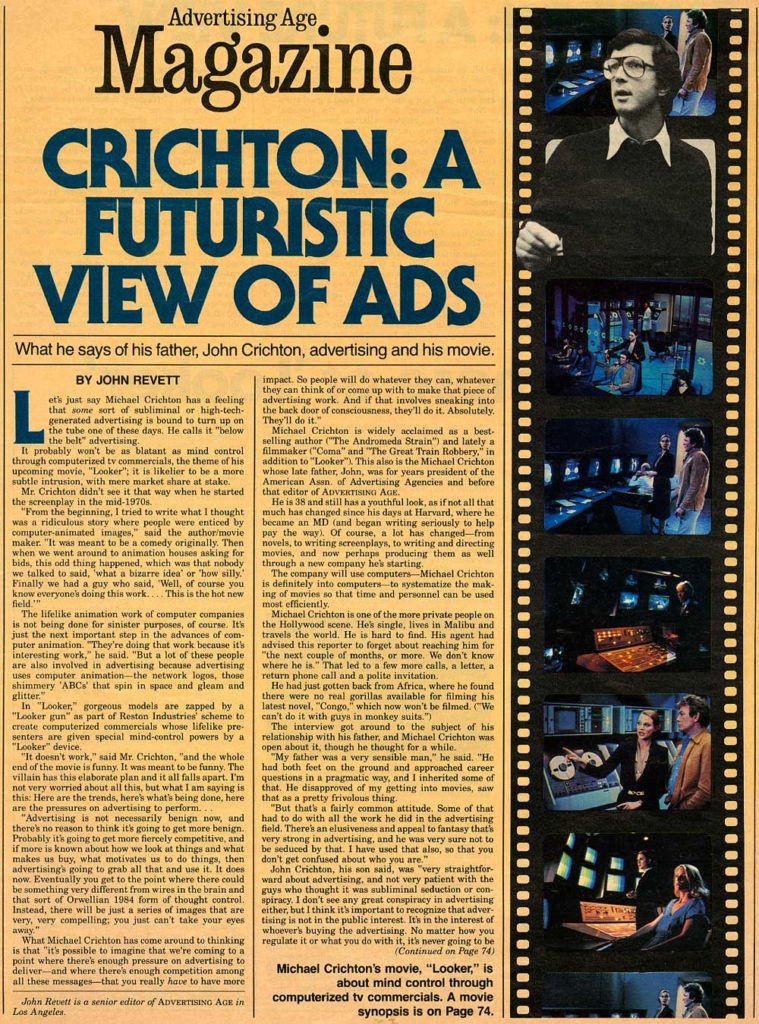

In 1981, Advertising Age profiled Michael Crichton and his movie Looker which is set in the world of advertising Here is an excerpt from “Crichton: A Futuristic View of Ads” by John Revett.
“Let’s just say Michael Crichton has a feeling that some sort of subliminal or high-tech generated advertising is bound to turn up on the tube on of these days. He calls it “below the belt” advertising.
It probably won’t be as blatant as mind control through computerized TV commercials, the theme of his upcoming movie, Looker; it is likelier to be a more subtle intrusion, with more market share at stake.
Mr. Crichton didn’t see it that way when he started the screenplay, in the mid-1970’s.
“From the beginning, I tried to write what I thought was a ridiculous story where people were enticed by computer-animated images.” said the author/movie maker. “It was meant to be a comedy originally. Then when we went around to animation houses asking for bids, this odd thing happened, which was that nobody we talked to said, ‘what a bizarre idea’ or ‘how silly.’ Finally we had a guy who said, ‘Well, of course you know everyone’s doing this work … this is the hot new field,’”
In His Own Words
In Looker, I present the idea of below-the-belt advertising for commercial or even political purposes. Do we agree with that? Do we think it is a good idea? Is it happening? Yes. Computer-animated images are the hot new field right now. And it is not so far-fetched to imagine that sophisticated, clever subliminal manipulation through computerized televised images might be used in the future for political purposes.
“One month ago, drug trials of morladone, para-amino benzadone, and triamiline were concluded. Benson showed no improvement on any drug or combination of drugs. He was therefore a stage two – drug-resistent ADL syndrome. And he was scheduled for a stage-three surgical procedure, which we will discuss today.”
She paused. “Before I bring him in,” she said, “I think I should add that yesterday afternoon he attacked a gas-station attendant and beat the man rather badly. His operation is scheduled for tomorrow and we have persuaded the police to release him in our custody. But he is still technically awaiting arraignment on charges of assault and battery.”
The room was silent as she turned, and went to bring in Benson.
Photos from the set of Looker
Looker photo credits: Warner Bros.
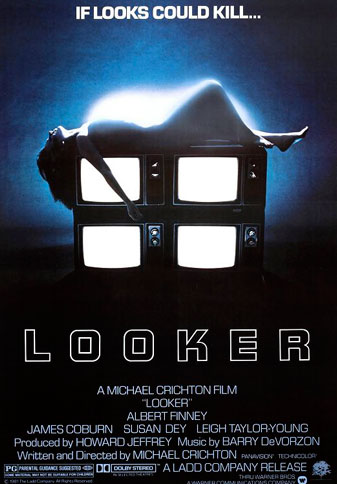


Looker (Movie)
| Release Date: | October 30, 1981 |
| Running Time: | 1 hr. 33 min. |
| MPAA: | PG |
| Director: | Michael Crichton |
| Screenwriter: | Michael Crichton |
| Studio: | Warner Bros. |
| Starring: | Albert Finney, James Coburn, Susan Dey, Leigh Taylor-Young, Dorian Harewood |
In His Own Words
Looker is a totally visual story. It has amazingly little dialogue in it. It’s just picture, picture, picture, and you make the connections on the basis of what you see.


